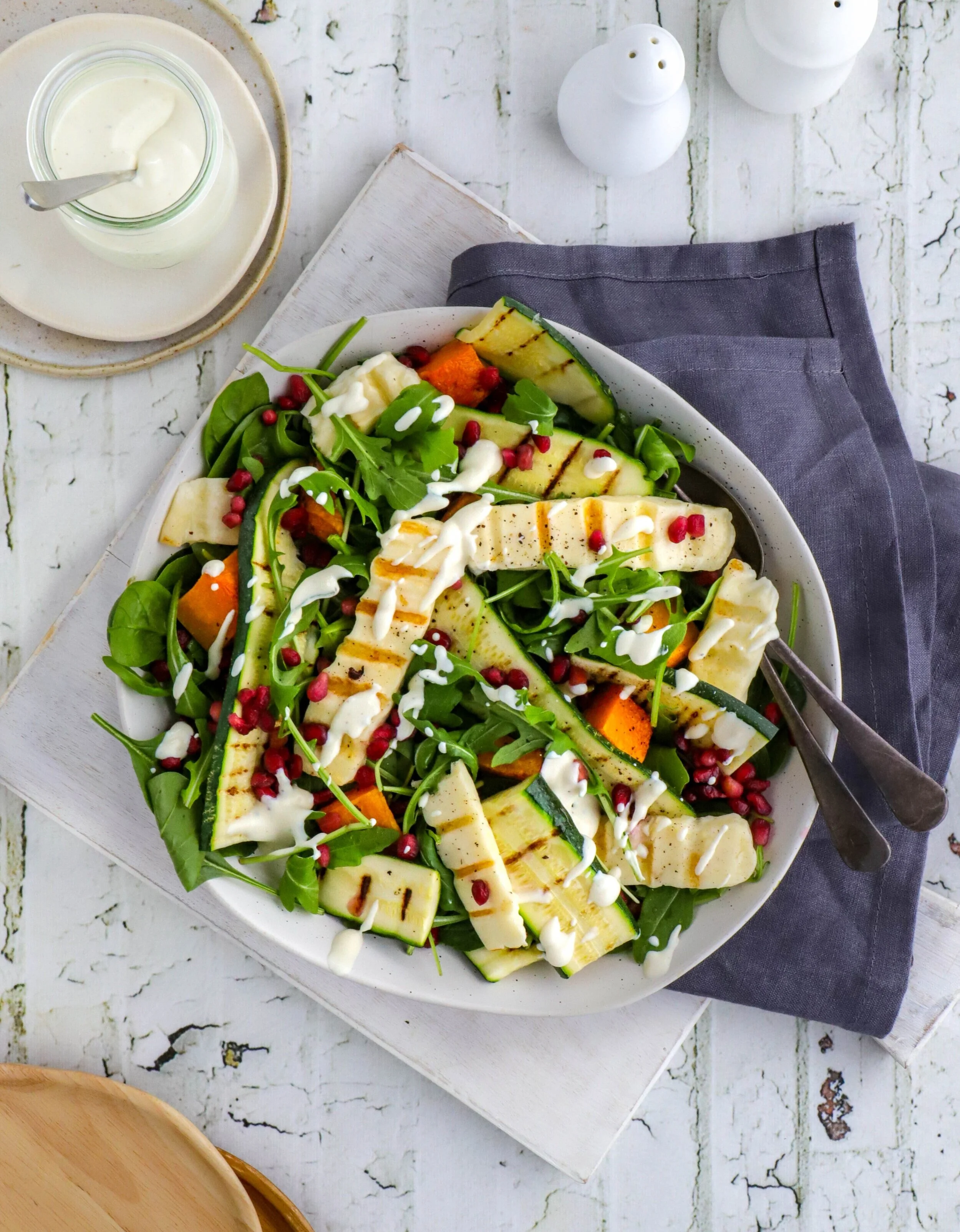What is the Dairy Matrix?
/As you all know, culinary nutrition is something I am incredibly passionate about and I firmly believe the health benefits of food extends well beyond just the nutrients they contain. I am a huge advocate for hero-ing wholefoods in everyday cooking. Approaching wholefoods as a complete picture, rather than just their individual building blocks, gives a better understanding of how our bodies digest and absorb all the nutrients. This new approach to food and the science that lies beneath is known as the Food Matrix - a philosophy that food is much more than just the sum of its nutrients.
Looking beyond the label
Nutrition science is an increasingly evolving area. In the past, research has focused on identifying direct links between nutrients and health outcomes (e.g. iron deficiency and anaemia). As a result, our dietary recommendations mainly focused on either increasing or decreasing consumption of certain nutrients to stay healthy and help prevent disease. However, it is important to note that we don’t eat nutrients in isolation. But rather, we cook meals to share, full of flavours we love and eat wholefoods which contain a whole package of nutrients - a unique collection of macronutrients, micronutrients and various other components.
The Dairy Matrix
The Dairy Matrix refers to the unique package of nutrients and bioactive factors found in food along with its physical structure – the interactions that happen then determine how our bodies digest and absorb nutrients from the foods. Looking at Dairy foods, cheese is solid in structure, yoghurt is semi-solid and milk has a liquid structure. Whilst it seems so simple, these distinctions are important as these differing physical structures can affect the bioavailability of nutrients, the way and rate at which they are digested and absorbed by the body and then the effects this has on our body.
The growing body of evidence that supports the Dairy Matrix science has shed a whole new light on how dairy impacts our health and might just transform the way you view the food group. To help explain this further, I’ve picked a few hot topics for you.
Full cream is back on the menu
For most Australians, we were always told that low-fat or no-fat dairy products are better for our health. This recommendation was based around the lower fat and saturated fat content of full-cream dairy, based on concerns around heart health and weight gain. However, after a substantial review of current evidence, it has been confirmed that full-fat dairy does not deserve this bad reputation and does not lead to weight gain. The Heart Foundation changed their healthy eating guidelines in 2019, saying that full-fat milk, cheese and yoghurt are all nutritious dairy options for healthy Australians.
I am often asked “which milk is best?” And my answer is - whichever you prefer. There is no longer enough evidence indicating a restriction on full-cream milk is required for healthy Australians.
More cheese, please
Have you ever thought “If it tastes this good, it might be bad for me?” Most people tell me they love cheese, but must limit how much they eat of it. But I think we can all agree that dinners taste better with a generous grating of cheese, or drinks go down smoother alongside a cheese platter.
Whilst cheese contain sodium and saturated fat, several studies have consistently shown that cheese has a favourable or neutral effect on several heart-health outcomes. You might be surprised to hear that cheese consumption has actually been linked to a reduced risk of stroke, hypertension and cardiovascular disease. For example, a recent meta-analysis of prospective studies confirmed that eating 40g of cheese a day (two slices) is linked to a 10% reduction in the risk of heart disease. This link is thought to exist due to specific components of the cheese matrix. Specifically, the way that certain minerals and starter cultures work alongside the milk fat structure found in cheese to help modify the impact of saturated fat.
Ultimately, if you are craving a creamy hot-choccy or desperate for a few chunks of cheese. Go for it - I don’t want you to feel restricted or deprived. Eating foods we love is great for our mental health (and taste buds!) but also our bodies. Remember, the health benefits of food extends well beyond just the nutrients they contain.
Each type of dairy food brings its own unique Dairy Matrix to the table. A good mix of dairy foods will provide a suite of health benefits. Check out my Grilled Haloumi Salad w. Zesty Yoghurt Dressing. Doubling up on the dairy is always a good idea!
Grilled Haloumi Salad w. Zesty Yoghurt Dressing
1/2 cup Greek-style yoghurt
1 tsp Dijon mustard
1 garlic clove, crushed
1 lemon, juiced & zested
2 tbsp extra virgin olive oil
1 cup butternut pumpkin, roughly chopped
2 large zucchini, thinly sliced
250g haloumi, sliced
3 cups rocket
¼ cup pomegranate arils
To make the yoghurt dressing: Place yoghurt, mustard, garlic, lemon juice, zest and 1 tablespoon oil in a small bowl. Mix until smooth. Season with salt and pepper. Set aside.
Place pumpkin on a lined baking tray, toss in 2 teaspoons of oil and season with salt and pepper. Bake for 20 minutes in a moderate oven.
Meanwhile, prepare the salad. Heat a large frying pan or griddle pan over medium heat. Lightly coat with remaining oil. Add zucchini. Cook for 2 minutes each side or until golden. Set aside and cover to keep warm. Repeat process for haloumi slices.
Place the rocket in a large serving bowl. Top with cooked pumpkin, zucchini and haloumi pieces. Top salad with pomegranate arils and pour dressing over. Serves 4.
This blog post was produced in collaboration with Dairy Australia. For more information on the Dairy Matrix, visit: www.dairy.com.au/dairy-matters/the-dairy-matrix





